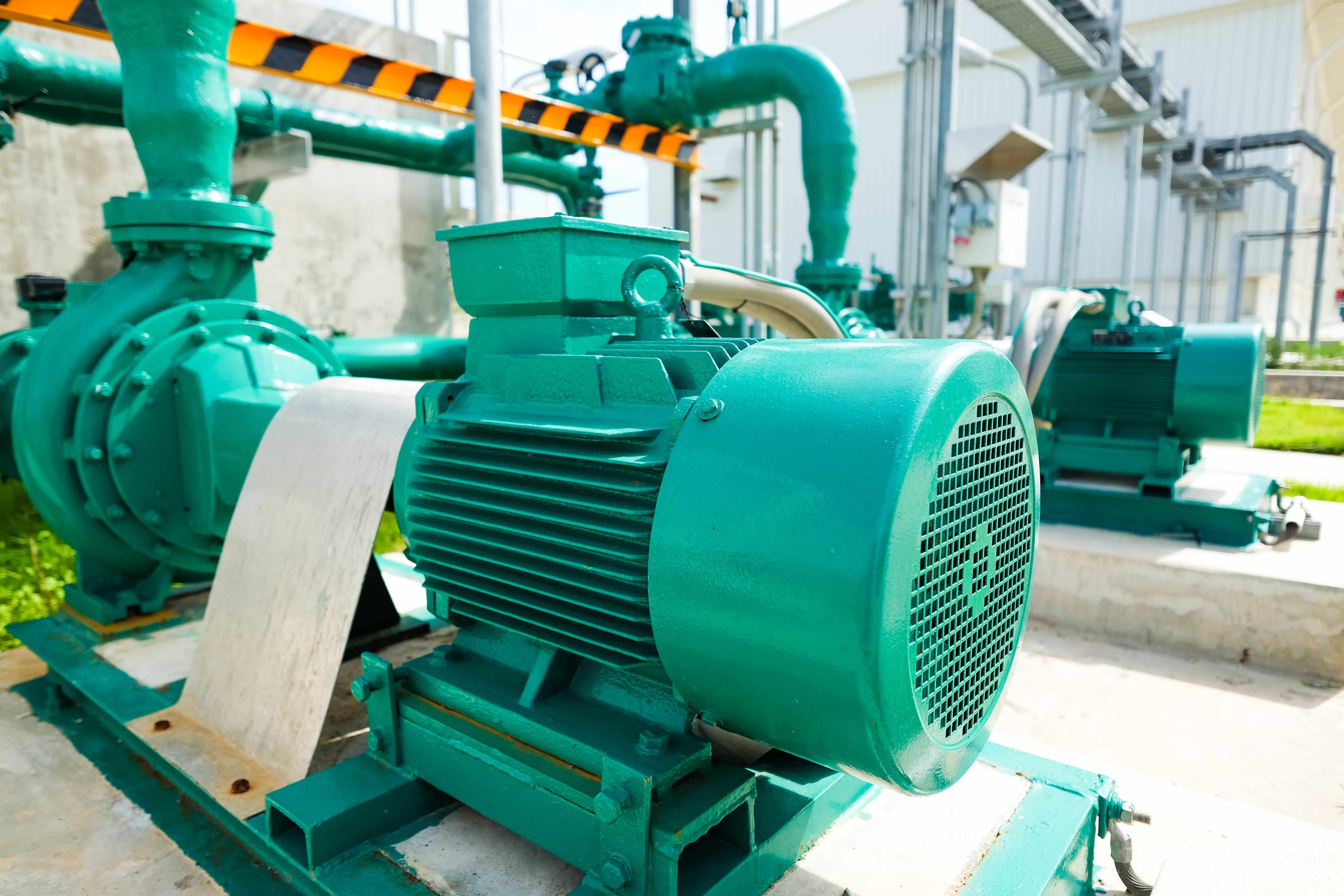
Industrial pumps are specifically designed to be used in heavy-duty or harsh applications. They move a variety of material types, which include wastewater and water, petroleum, chemicals, slurries and sludges, as well as food.
It is important to choose the right pump for your application because failing to select the appropriate pump for a particular use case may result in inefficient operation at best, and catastrophic failure of equipment at worst.
Types of Pumps and Their Uses
Pump solutions typically fall under one of two categories:
- Dynamic pumps
- Positive Displacement Pumps
A positive displacement pump controls fluid by moving at a constant speed regardless of the speed of the fluid when entering the inlet valve. On the other hand, dynamic pumps add kinetic energy to the fluid by increasing the speed of the fluid and that energy transforms into pressure at the slowed outlet point.
Each category encompasses several different types of pumps, which include:
- Centrifugal Pumps: Create suction using one or multiple rotating impellers
- Reciprocating Pumps: Create suction using a piston that pushes in and out of the fluid
- Rotary Pumps: Drive fluid flow using two gears that mesh together to create a high level of discharge pressure.
- Depending on the pump type, common applications may include:
- Pressurising fluid/water
- Large-volume fluid management
- Chemical processing
- Water movement
Pumps can be used in different sectors, such as:
- Construction: Maintaining construction sites, mitigating flooding risks, and providing pressurised water for cleaning.
- Industrial: Supporting manufacturing processes, boosting pressure, boiler feed, filtration, and moving chemicals.
- Preventing Floods: Industrial sump pumps along with other types of submersible pumps are important for preventing flooding in commercial and industrial buildings.
- Municipal: Complex municipal water systems are heavily reliant on an equally complex system of pumps for maintaining water pressure throughout the water network.
- Fire Suppression: Critical for maintaining pressurised water in emergency fire suppression systems. Pumps are also used by fire trucks for pulling water from the municipal water system through hydrants.
- Waste and Sewage: Movement of a variety of liquid and solid waste material.
- Engines: Pumps for the movement of the fuel for combustion.
- Agriculture: May be used for hydrating animals and facilitating irrigation.
Key Considerations When Choosing a Pump
Finding the right pumps for an industrial or commercial application is critical to the system’s life-long performance. Each pump has dozens of different specifications. Keep these four considerations in mind when searching for the right pump:
1. Construction Materials
Choose your pump based on the ability of the material to withstand the chemicals in the fluid composition as well as the surrounding environment. stainless steel drum pump, cast iron, and bronze are some of the common materials. Various applications also require pumps that meet certain regulatory standards.
2. Power Demands and Availability
Pumps having high horsepower levels used to tightly regulate the pressure of the process fluid require access to reliable and proper power sources. Many pumps come in gas-powered and electrical varieties for use in mounted environments and mobile applications such as in construction and agriculture.
Besides considering the power source, you should also choose the right pump based on any current or voltage constraints.
3. Fluid Properties
Heated fluids, process liquids containing solids, and corrosive fluids each require different pump constructions and material treatments. Note the properties of the process fluid likely to degrade or put stress on the pump to ensure that you choose an appropriate model.
4. Flow Demands
Different pump mechanisms control the pressure of the fluid. Elevation, friction, and the build-up of kinetic energy change the pressure levels of the fluid to meet the needs of the application. You should select the proper pump based on its pressurising mechanisms, the pump’s anticipated submersion or elevation, as well as its intended application.
